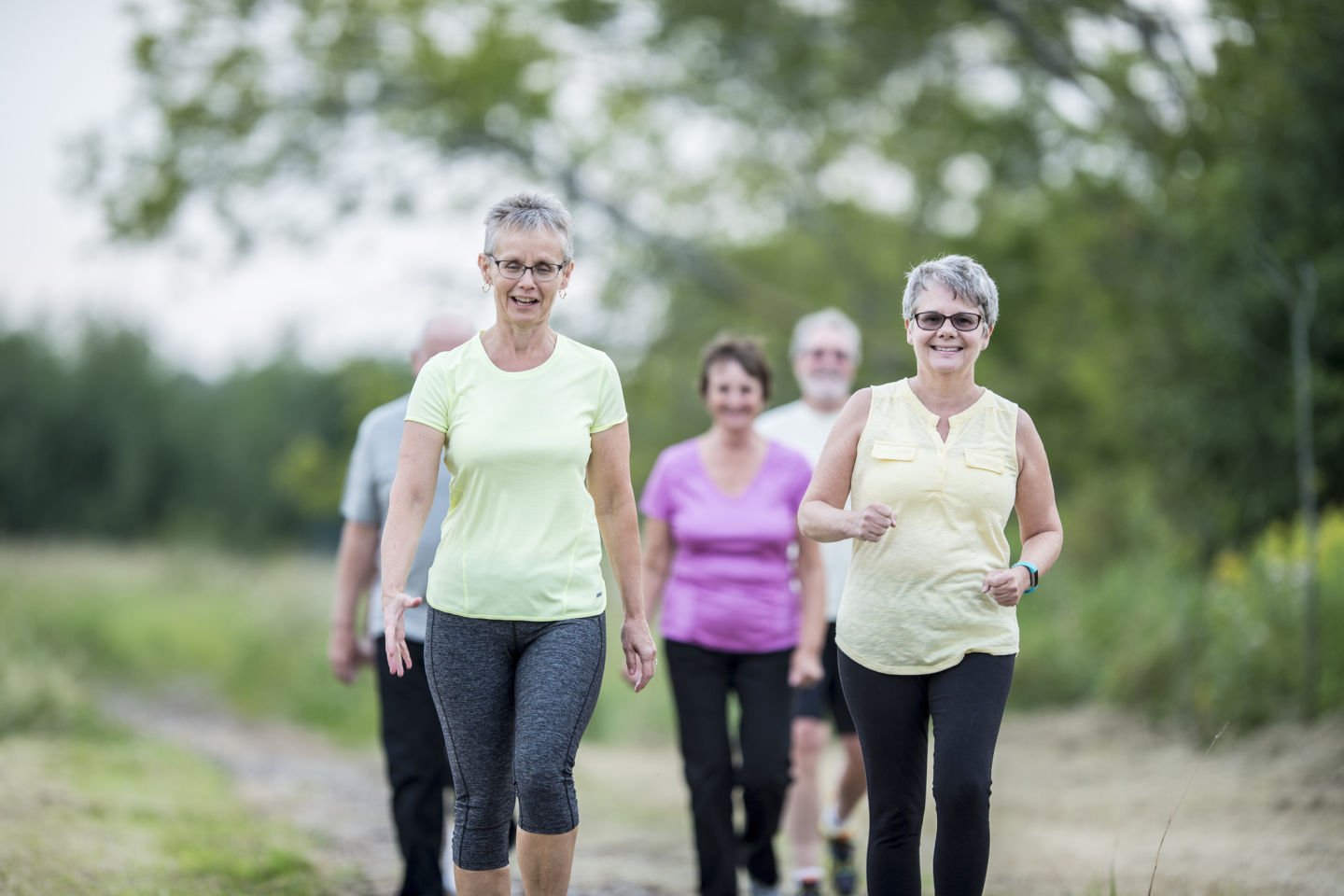Walking champions honoured for taking the extra step
Stepping up to better heart health with a group is safe, interesting, and easy.

Barry Nixon is a leader for four separate walking groups, all established for people who have come through cardiac rehabilitation.
He’s been a walk organiser for four years and has done more than 500 walks.
Barry is this year's Victoria winner of the Heart Foundation's Golden Shoe award – an annual award given to walk organisers in each state and territory for their efforts to support new and seasoned walkers in the name of heart health.
In honouring Barry, the Foundation says the Ballarat walkers have gone from strength to strength with Barry at the helm.
He is active in helping support mental and physical health, even assisting walkers to gain access to district medical personnel and services, and enjoy coffee catch ups, lunches, dinners, concerts, and community events.
Stories of other 2023 Gold Shoe Award winners can be found here.
The Heart Foundation says walking for an average of 30 minutes or more a day can lower the risk of heart disease, as well as stroke (by 35%) and type 2 diabetes (by 40%).
It’s not just your heart and muscles that benefit from walking.
Regular physical activity can help:
Manage weight, blood pressure and blood cholesterol.
Reduce your risk of developing some cancers.
Maintain your bone density, reducing your risk of osteoporosis and fractures.
Improve balance and coordination, reducing your risk of falls and other injuries.
Improve your daily mood which cumulatively leads to better mental health.
All adults aged 18-64 years should aim for 150 minutes of moderate physical activity each week. That’s 30 minutes five days of the week. It’s considered “moderate” if it takes some effort, but you’re still able to talk comfortably.
If you can’t find time for a 30-minute walk, try breaking your 30 minutes of walking into three 10-minute sessions on each of 5 days, it is just as beneficial as doing the 30 minutes in one go!
If you're already finding your 30, you should consider picking up the pace, as people who are already active will benefit even more by exercising harder and longer.
When it comes to walking for heart health, some is better than none (and more is even better). If you're not physically active, start by doing 10 minutes of brisk walking, and gradually build up to the recommended amount. Visit your GP or health professional for advice on how to safely build up your movement.
Walking with guidance or supervision is an important part of cardiac rehabilitation programs, and for people diagnosed with heart disease or recovering from a heart attack. But it’s important to speak with your GP to learn how to safely build up your activity.
For more information on ways to build up your walking after a heart event or surgery, visit heartfoundation.org.au. You can find a walking group and plan your walk by clicking here.
The best way to warm up is to walk slowly. Start each walk at a leisurely pace to give your muscles time to warm up, and then pick up the speed.
Afterwards, gently stretch your leg muscles – particularly your calves and front and back thighs. Stretches should be held for about 20 seconds.
If you feel any pain, ease off the stretch. Don’t bounce or jolt, or you could overstretch muscle tissue and cause microscopic tears, which lead to muscle stiffness and tenderness.
Walking is a low-cost and effective form of exercise. However, the wrong type of shoe or walking action can cause foot or shin pain, blisters and injuries to soft tissue.
Make sure your shoes are comfortable, with appropriate heel and arch supports. Take light, easy steps and make sure your heel touches down before your toes.
Whenever possible, walk on grass rather than concrete to help absorb the impact.
Some suggestions to help make regular walking a pleasurable form of physical activity include:
Varying where you walk.
Walking the dog.
Walking with friends.
Joining a walking club.
If you want to stick close to home and limit your walking to neighbourhood streets, pick different routes so you don’t get tired of seeing the same sights.
If you feel unsafe walking alone, find one or more friends or family members to walk with.
Walk at various times of the day. The sights to see first thing in the morning are bound to differ from those of the afternoon or early evening.
Drive to nature reserves, park the car and enjoy the views while walking.
Explore what’s happening around you; notice the sky, the people, the sounds.
Be mindful about your safety and security.
Related reading: Better Health, Heart Foundation








